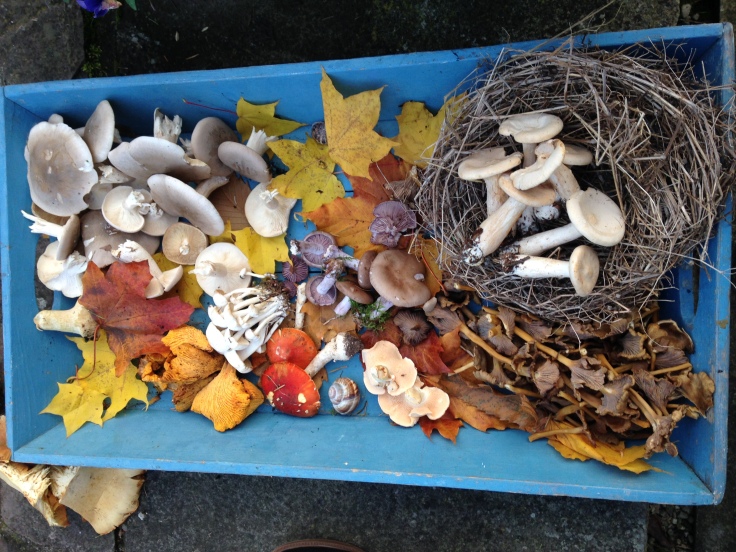It is a muggy damp July evening,the garden is full of new spuds, courgettes, carrots, beans, peas and bucket loads of berries all needing some attention be it weeding or picking, and in the hedges there are the last few Elderflowers, on the mountains a very healthy crop of Fraughans or wild Bilberries (Vaccinium myrtillus). 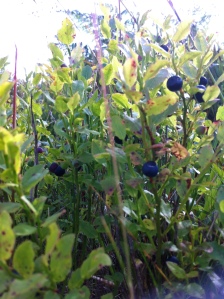
These tasty little berries are packed full of vitamin C along with large amounts of anthocyanins, blue pigments which are powerful antioxidants.
Today on the way home we spied some Dryad’s saddle polyporus squamus mushrooms growing on a neighbors tree stump, they made a tasty dish for dinner, I have tried these before but had picked slightly older ones and it was like chewing an old boot.So it was good to finally enjoy them as young tasty polypores, they are easy to identify, growing on dead wood and reaching up to 50cms in diameter, they have brown scales and a depression in the cap close to the stem. They are a bracket fungus growing with pores on the underside, sometimes called pheasant of the woods due to their scales which look like a hen phesant’s back.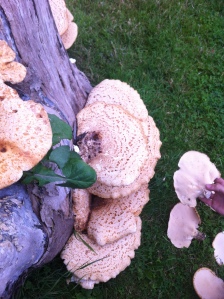
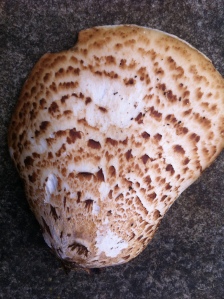
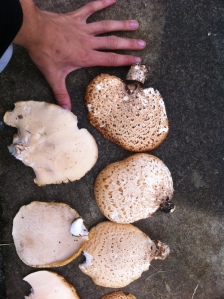


On July 6th we collected and enjoyed our first Chanterelles of the season, so delicious.
Recently a lady visited who is interested in quilting and has begun to dye her own fabrics, this has caught my interest and helped me notice certain wild plants in a new way. I have been seeing Dyer’s rocket also know as Weld (Reseda luteola) for years and vaguely wondering what that tall hand some plant is, to forget all about it in search of familiar forages, now it has a whole new significance for me, not that one needs to be useful as well as handsome but it helps!I hope to find a half hour to cut some and dry it for use in Glady’s craft.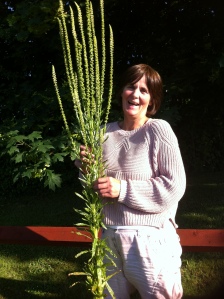
getting to know this plant led me to wonder which other plants can be used to dye fabrics and the list is long, including nettle roots, flag iris flowers and roots, Bilberries to mention but a few.
In other news my recipe for rose cake has been well received by many of you, thank you all for kind comments.
We have bottled the Elderflower “Champagne” and will check the pressure in the bottles over the next few weeks as the champagne is for a family get together in August,also made vegan ice-cream and buckets of cordial, no matter how many blossoms I collect and use there is always a slight feeling of not having gathered enough,at the same time it gladdens my heart to see the berries setting and swelling with a promise of rich harvest to come.
Hazelnuts looking good too as are the Damsons…. so much to look forward to, but just now time to sit still and watch the sky darken and the bats come out on this moonlit night.
